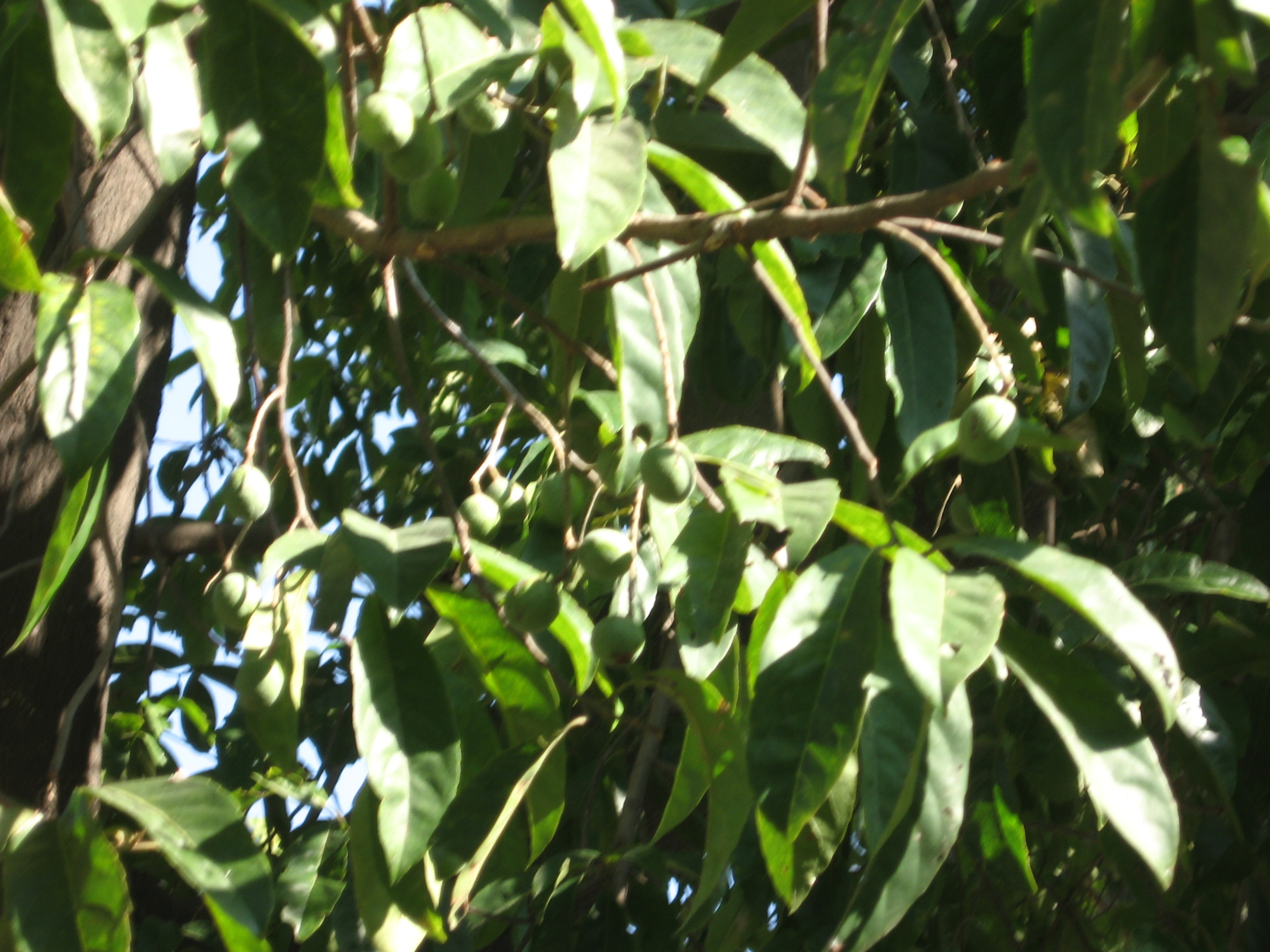- Rudraksha
Taxobox
name = Rudraksha Tree

image_caption=A Rudraksha Tree at Rishikesh
image2_caption=Fruit on the Tree
regnum =Plant ae
divisio = Magnoliophyta
classis =Magnoliopsida
ordo =Oxalidales
familia =Elaeocarpaceae
genus = "Elaeocarpus "
species = "E. ganitrus"
binomial = "Elaeocarpus ganitrus"
binomial_authority = (Roxb.)Rudraksha (Sanskrit: "IAST|rudrākṣa") ("Rudra-eyed") is the name of the dark berries of "
Elaeocarpus ganitrus", used to make prayer beads (Sanskrit: "IAST|mālā"). [For translation of "IAST|rudrākṣa" as "Rudra-eyed" and definition as berries of "Elaeocarpus ganitrus" see: Stutley, p. 119.] The word is aSanskrit compound consisting of the nameRudra and "IAST|ākṣa" ("eye"). The Latin name 'ganitrus' possibly taken from ganitri, the name for this species in Sundanese andMalay .The Rudraksha is a large evergreen broad-leaved tree that grows in the area from the Gangetic Plain to the foothills of the
Himalaya s. Rudraksha trees are also found in middle areas of Nepal. Rudrakshaseed s are covered by an outer shell of blue color when fully ripe, and for this reason are also known asblueberry beads. The blue colour is derived not from pigment but is structural. [Lee, D. W. Ultrastructural basis and function of iridescent blue color of fruits in "Elaeocarpus". Nature 349, 260−262 (1991).] Rudrakshabead s are the material from which sacred garlands (108 beads in number) are made. The term is used both for the berries themselves and as a term for the type of "IAST|mālā" made from them. [For use both to refer to the beads and to a "IAST|mālā" see: Apte, p. 804.] In this sense, a rudraksha is aSaivite rosary , used forjapa mala . Repetitive prayer (japa ) is a common aid to worship inHinduism , and Rudraksha IAST|mālā are worn by many Hindus.Fact|date=July 2007 Rudraksha is also used for treatment of various diseases in traditionalIndia n medicine.The berries show variation in the number of grooves on their surface, and are classified on the basis of the number of divisions that they have. A common type has five divisions, and these are considered to be symbolic of the five faces of Shiva. [For the five-division type as signifying Shiva's five faces and terminology "IAST|pañcānana", see: Stutley, p. 119.]
The Rudraksh seeds are brittle in nature and so should be protected from chemicals.Fact|date=August 2007
The best way to find the authenticity of a rudraksha is to get it X-rayed and count the number of compartments inside. If they are equal to the number of lines outside the rudraksha is real.
References
*cite book |last=Stutley |first=Margaret|authorlink= |coauthors= |title=The Illustrated Dictionary of Hindu Iconography|year=1985 |publisher=|location=|isbn= First Indian Edition: Munshiram Manoharlal, 2003, ISBN 81-215-1087-2.
Wikimedia Foundation. 2010.
